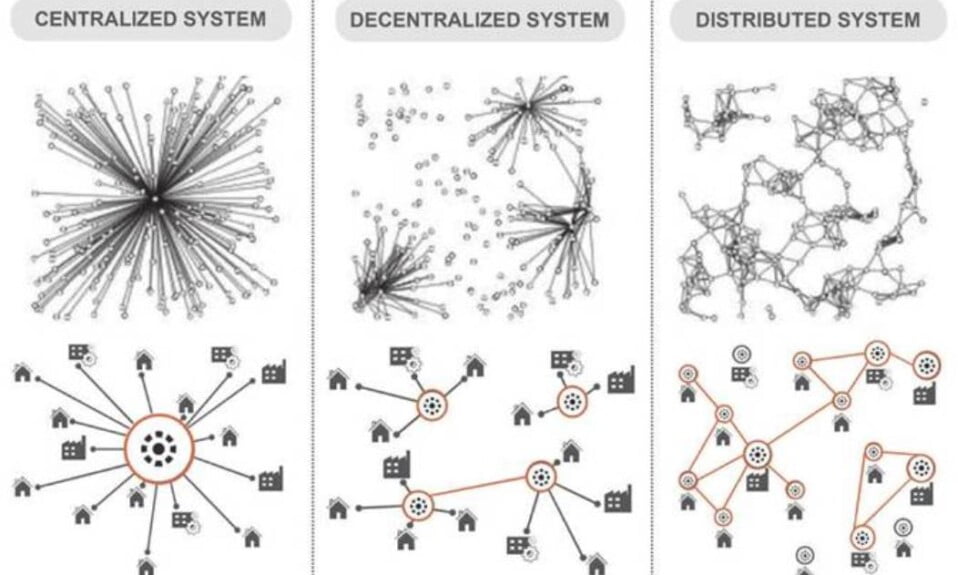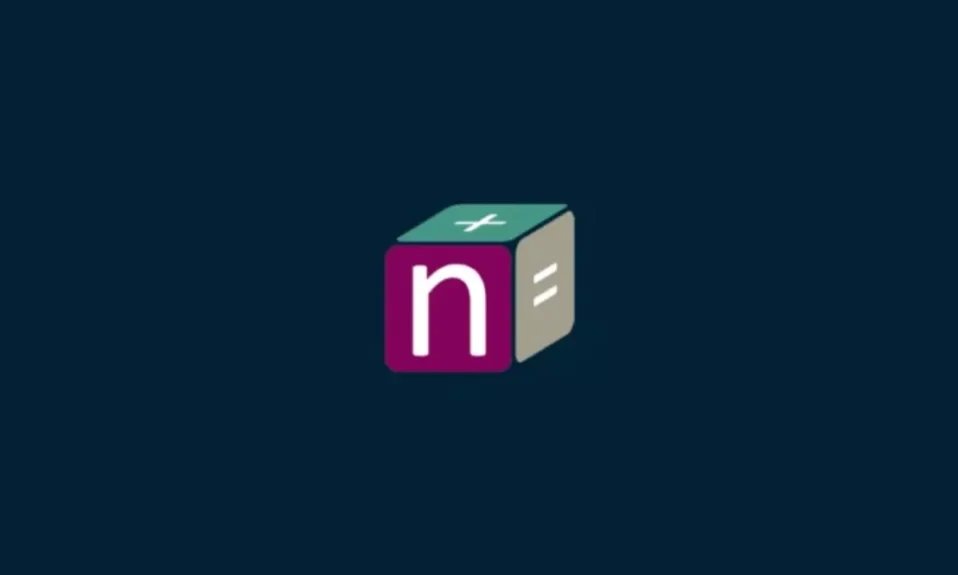Networks are frequently referred to as “decentralized,” “distributed,” and “centralized” in discussions about blockchain technology. But, first and foremost, what is a decentralized network? Is there a difference between it and a distributed network? What are the benefits of these network designs over centralized networks?
What Is a Centralized Network?
Centralized networks are based on a single, centralized server/master node that handles all major data processing and stores data and user information that is accessible to other users.
Further, client nodes can connect to the main server from there and submit data requests rather than performing them directly. The majority of web services, such as YouTube, a mobile app store, or your online banking account, are managed by a centralized network owner, which means that all data transactions within these networks are subject to third-party verification.
On the internet, centralized networks are currently the most popular network type. These networks rely on a single point of failure to connect all of the other satellite users and devices, which means there is a single point of failure that malicious actors can take advantage of.
Advantages of Centralized Network
- Simple and Rapid Deployment: Because command chains are clearly defined within centralized networks, network delegation is relatively simple, and less cross-talk between different levels of authorization is required. By creating or removing connections between the client node and the main server, it’s also simple to add and remove client nodes from the network. This, however, has no effect on the network’s computing power.
- Affordable Maintenance: For small systems, centralized networks are usually the most cost-effective option because they require fewer resources to set up and maintain. Furthermore, only the central server needs to be updated when a network administrator needs to patch or update the network. This cuts down on the time and effort required to keep a network current.
- Consistency: Because centralized networks are top-down, standardizing interactions between the main server and client nodes is easier. As a result, the end user experience will be more consistent and streamlined. Furthermore, because tracking and collecting data across the network is relatively simple, extraneous or deviant activity can be identified and removed in accordance with the network’s priorities and needs.
Disadvantages of Centralized Network
- Increased Downtime Risks: Because centralized networks have a single point of failure, if the main server goes down, the entire network will most likely go down as well. As a result, client nodes will be unable to send, receive, or process user requests independently. Furthermore, server maintenance may necessitate temporarily turning off the main server, resulting in service interruptions and, as a result, user inconvenience and diminished reliability.
- Higher Security Risks: Because there is only one target to compromise, having a single point of failure increases the chances of security breaches or disruptions from cybersecurity threats such as DDOS attacks. Furthermore, because user data is stored in a single central location, centralized networks will always pose a privacy risk. The data on a main server may be permanently lost if it is corrupted or taken offline.
- Limited Scalability: Because the only way to scale a centralized network beyond a certain point is to add more storage, bandwidth, or processing power to the central server, centralized networks can be difficult to scale beyond a certain point. Furthermore, if the network’s traffic spikes beyond what it was designed to handle, information bottlenecks may occur, resulting in increased latency for users further away from the central server.
What Is a Decentralized Network?
A decentralized network, on the other hand, distributes data-processing workloads across multiple devices rather than relying on a single central server. Each of these individual devices functions as a mini central unit that interacts with other nodes in its own way.
As a result, even if one of the master nodes fails or is compromised, the other servers can continue to provide data access to users, and the network as a whole will operate with minimal or no downtime.
Recent technological advancements have enabled decentralized networks by providing computers and other devices with significant processing power that can be synced and leveraged for distributed processing.
While decentralized networks differ from centralized networks in many ways, it’s important to remember that decentralized networks don’t evenly distribute data storage and processing across the network and still rely on main servers, albeit more than one per network.
Advantages of Decentralized Network
- Increased Flexibility and Scalability: Decentralized networks do not have a single point of failure, so even if a master node is compromised or shut down, they can continue to function. Decentralized networks are also simple to scale because you can simply add more devices to the network to increase computing power, and network maintenance rarely necessitates a complete network shutdown.
- Speed and Scalability: Both centralized and decentralized networks are less scalable than distributed networks. Due to the even distribution of network processing power and data, they typically have lower latency.
- Enhanced Transparency: It is much more difficult to successfully modify, censor, or destroy information on a distributed network because data is shared evenly across the entire network. As a result, distributed networks are inherently more transparent than other systems, especially since cryptography is frequently used to secure data.
Disadvantages of Decentralized Network
- High Maintenance Costs: Distributed networks, like decentralized networks, require more resources to maintain or reconfigure because any meaningful change necessitates updating each individual node. Network administrators can’t temporally order commands or logs because the distributed nodes have different latencies and don’t share a common clock. As a result, designing and debugging algorithms for a distributed network can be challenging.
- Coordination Issues: There are no superior nodes overseeing the behavior of subordinate nodes in the absence of a node hierarchy, so there is no way to regulate individual nodes on the system. As a result, making timely decisions or completing large-scale tasks can be difficult. For some businesses and organizations, the decentralized chain of command can be an insurmountable problem. Furthermore, because gaining a global view of the entire network is difficult for any single node, it is difficult for individual nodes to make well-informed decisions based on the state of other nodes in the system.
What Is a Distributed Network?
A distributed network is similar to a decentralized network in that it has multiple network owners rather than a single centralized master server. Distributed networks, on the other hand, are made up of equal, interconnected nodes, which means that data ownership and computational resources are distributed evenly across the network.
A network that is simply geographically distributed but follows a top-down node hierarchy model is sometimes referred to as a “distributed network.” In most cases, however, the term refers to a network with evenly distributed node locations and computational resources.
Due to the lack of a central server or a separate set of master nodes in distributed networks, the burden of data processing is distributed across the network, with all users having equal access to data.
Individual nodes typically vote to change to a new state during the decision-making process on a distributed network, and the system’s final behavior is determined by the aggregate results of the decisions each individual node votes on.
The network’s consensus mechanism determines the specific processes by which a distributed network votes and makes decisions. Individual network components interact with one another in order to achieve a common goal in all forms of distributed decision-making.
Distributed networks are extremely fault-tolerant and secure due to their geographically dispersed nature. Their benefits and drawbacks are similar to those of decentralized networks, but on a larger scale.
Advantages of Distributed Network
Extreme fault tolerance: Because the computational workload is simply rebalanced among the remaining nodes, a node can fail independently without affecting the rest of the system in distributed networks. As a result, distributed data systems are far more dependable than other network architectures that rely on top-down node hierarchy.
- Speed and Scalability: Both centralized and decentralized networks are less scalable than distributed networks. Due to the even distribution of network processing power and data, they typically have lower latency.
- Enhanced Transparency: It is much more difficult to successfully modify, censor, or destroy information on a distributed network because data is shared evenly across the entire network. As a result, distributed networks are inherently more transparent than other systems, especially since cryptography is frequently used to secure data.
Disadvantages of Distributed Network
- High Maintenance Costs: Distributed networks, like decentralized networks, require more resources to maintain or reconfigure because any meaningful change necessitates updating each individual node. Network administrators can’t temporally order commands or logs because the distributed nodes have different latencies and don’t share a common clock. As a result, designing and debugging algorithms for a distributed network can be challenging.
- Coordination Issues: There are no superior nodes overseeing the behavior of subordinate nodes in the absence of a node hierarchy, so there is no way to regulate individual nodes on the system. As a result, making timely decisions or completing large-scale tasks can be difficult. For some businesses and organizations, the decentralized chain of command can be an insurmountable problem. Furthermore, because gaining a global view of the entire network is difficult for any single node, it is difficult for individual nodes to make well-informed decisions based on the state of other nodes in the system.
Centralized vs. Decentralized vs. Distributed Network
The majority of the Internet applications we use on a daily basis are centralized; they are owned by a single company or individual who provides and maintains the source code for execution on a computer, server, or even a cluster.
The majority of applications that engineers and users are used to building and using are centralized applications.
A company’s data is stored in a centrally owned database. Finally, you must trust that this company is acting ethically and in your best interests.
The term “distributed” refers to the fact that computation is spread across multiple nodes rather than just one. No node instructs any other node on what to do, which is known as decentralization.
The code runs on a peer-to-peer network of nodes, and the dApp is controlled by no single node. Different data structures can be used to store the application data depending on the functionality of the dApp. A blockchain is a decentralized ledger of transactions used by Bitcoin.
In a distributed network, messages are used by applications in which computation is distributed across components to communicate and coordinate their actions. In order to achieve a common goal, the components interact with one another.
The Bottomline
When comparing the relative merits of various network architectures, keep in mind that no one configuration is superior to another in all situations.
However, because the modern internet was built in large part on the foundation of centralized networks, most legacy systems have some form of centralized configuration.
The widespread adoption of decentralized and distributed network structures, which were designed to address the limitations of legacy system architectures in many ways, is currently driving a lot of innovation.
Decentralized and distributed systems, for example, have the potential to make theoretical applications like decentralized finance and the creation of self-sovereign identities a reality.
Organizations will increasingly be able to choose the network architecture that best suits their specific needs as the spectrum of network configuration options continues to expand, rather than trying to design around a limited set of network models.
As a result, as alternative network architectures become more common, the digital world’s fabric may begin to shift toward something more decentralized and distributed.
Well, that’s all we have for you about Centralized, Decentralized, and Distributed networks. We hope this guide helped you to understand all three blockchain network structures.
If you liked this, don’t forget to check out our other gaming, troubleshooting, and computing guides.
Furthermore, if you have any questions or suggestions, please use the comment below to contact us.








